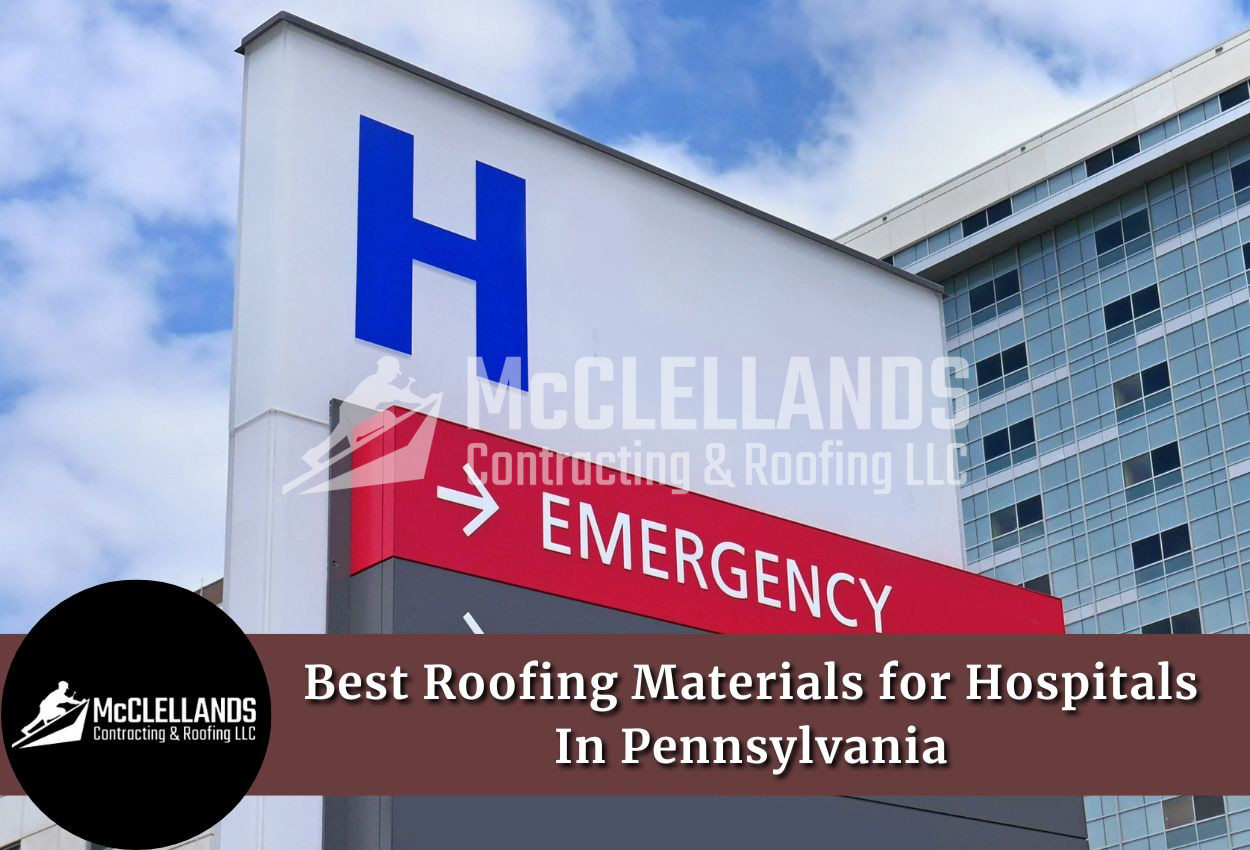As a hospital owner or facility manager in Pennsylvania, you understand that your building’s roof is more than just a covering, it’s an important investment in your facility’s future.
Pennsylvania’s varied weather patterns, from heavy snow to humid summers, make choosing the right roofing material especially important for healthcare facilities.
In this blog post, we will discuss some common hospital roofing materials that are built to protect your hospital and the people who depend on them.
Common Roofing Materials For Hospital Roofs In Pennsylvania
Here are some common roofing materials that are used for hospital roofs, from energy-efficient to time-tested options.
#1 Thermoplastic Polyolefin (TPO)
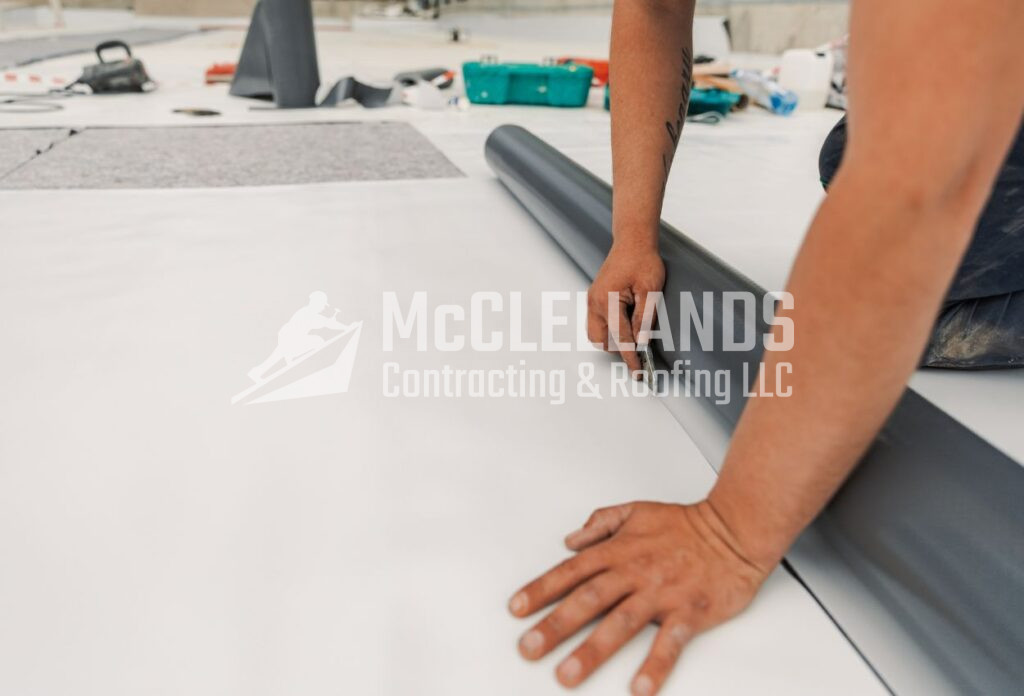
Thermoplastic polyolefin (TPO) is a single-ply roofing membrane that has gained immense popularity in the hospital roofing industry. TPO membranes are manufactured by mixing polypropylene and ethylene-propylene rubber, creating a durable and flexible material.
Hospital owners and facility managers in Pennsylvania often appreciate TPO for its outstanding weather resistance, which is important for withstanding our state’s harsh winters and humid summers. A properly installed TPO roof can also result in long-term cost savings due to reduced maintenance and repair needs.
TPO’s reflective properties contribute to energy efficiency by decreasing cooling costs, a significant advantage for hospitals that operate 24/7.
The large-sheet installation method creates a seamless barrier, minimizing the risk of leaks that could disrupt hospital operations.
However, it’s important to be aware that TPO can be susceptible to puncture damage and may require specialized cleaning agents to prevent staining.
#2 PVC
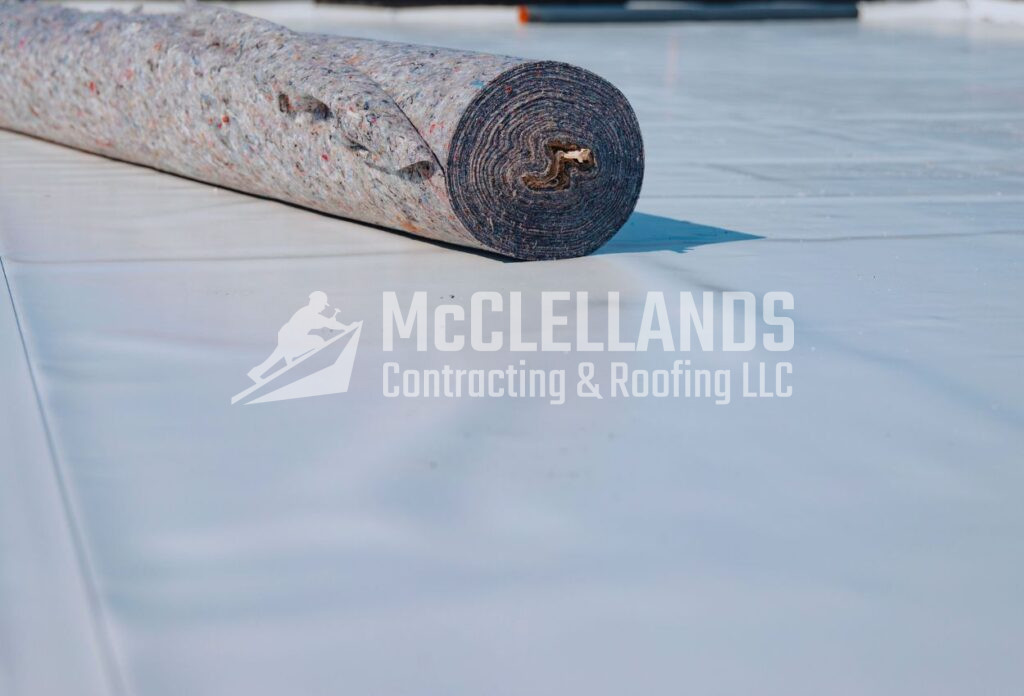
Polyvinyl chloride (PVC) is another single-ply membrane option that offers distinct advantages for hospital roofing systems. PVC membranes are composed of two layers: a flexible PVC top layer and a reinforcing fabric backing.
For Pennsylvania hospitals dealing with frequent use of strong cleaning agents or medical materials, PVC’s superior chemical resistance is a major benefit.
PVC roofs also provide safety with their inherent fire-resistant properties, which are important for protecting patients and staff. With a lifespan exceeding 20 years, PVC represents a sound long-term investment.
The heat-welded seams create a highly effective waterproof barrier, safeguarding sensitive medical equipment and facilities. However, PVC can be more expensive than other options and may be susceptible to plasticizer migration, which can affect its flexibility over time.
#3 Modified Bitumen
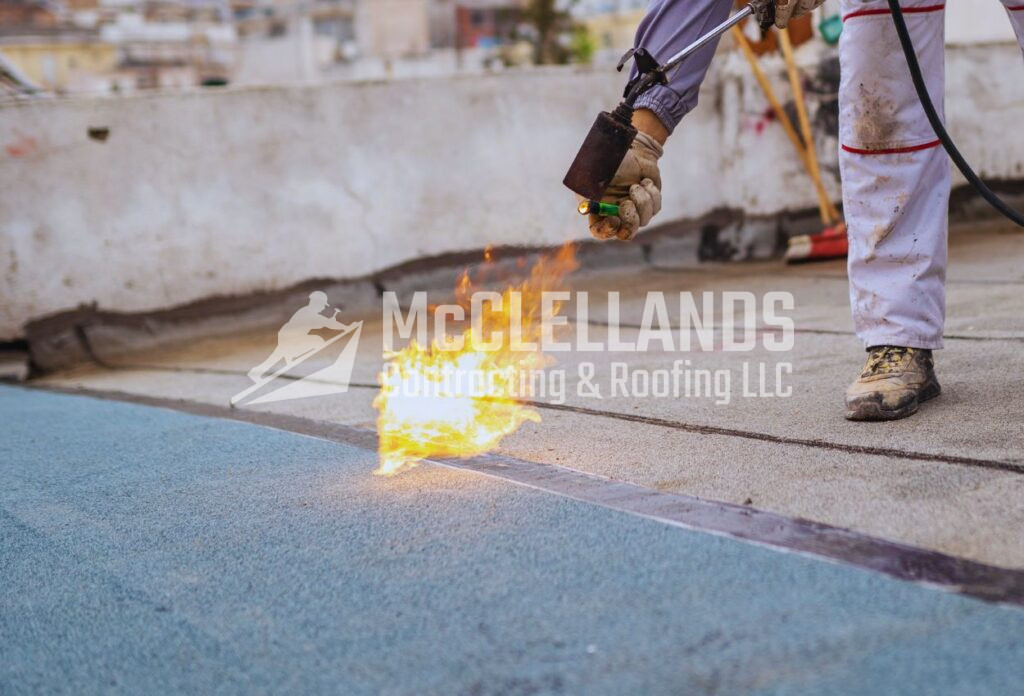
Modified bitumen is a multi-ply roofing system that has proven its reliability in the hospital roofing industry. It’s composed of asphalt that has been modified with polymers to enhance its performance.
This modification gives the material excellent flexibility, allowing it to withstand Pennsylvania’s temperature fluctuations without cracking or losing its waterproofing capabilities.
Modified bitumen is also highly adaptable to various roof shapes and designs, making it a suitable choice for hospitals with complex architecture.
It offers a cost-effective roofing solution with good durability and weather protection. However, modified bitumen roofs can be vulnerable to UV degradation and may require more frequent maintenance compared to single-ply systems.
#4 EPDM (Ethylene Propylene Diene Monomer)
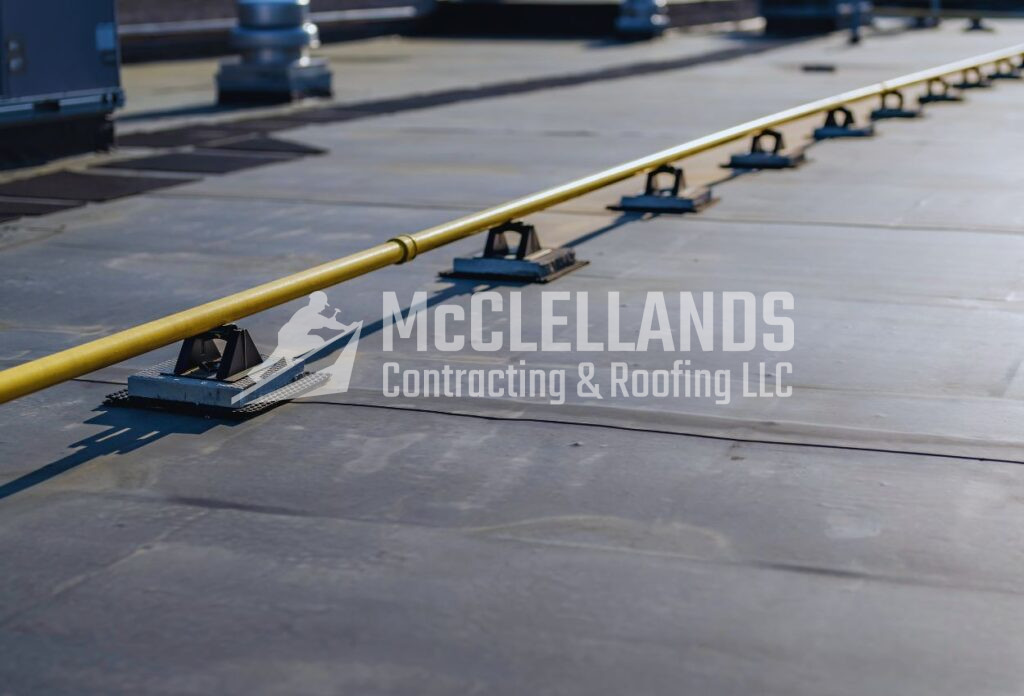
This is another popular single-ply roofing membrane known for its exceptional durability and weather resistance. EPDM comes in various thicknesses, typically ranging from 45 to 90 mils, with thicker options providing better durability. EPDM is particularly resistant to UV radiation and ozone, making it a good choice for long-term performance. It’s also relatively affordable and easy to install.
But keep in mind that EPDM can be susceptible to puncture damage and may require regular cleaning to prevent dirt buildup.
Professional EPDM membrane installation is important and it includes proper seaming techniques and appropriate flashing around roof penetrations to ensure watertight protection. Most manufacturers offer warranties extending up to 30 years when installed correctly.
#5 Built-Up Roof (BUR)
A built-up roof (BUR) is a multi-layer system that is a good hospital roofing material choice.
Your healthcare facility faces different challenges with rooftop equipment installations, and BUR’s tough construction provides a nice foundation.
This roofing material for hospital roofs consists of multiple layers of bitumen and reinforcing fabrics, creating an impenetrable shield.
Your medical facility benefits from its resistance to mechanical damage, which is particularly important around HVAC systems and medical gas installations.
The multi-ply system offers redundant protection, ensuring that even if one layer is compromised, your sensitive medical equipment remains protected. BUR’s compressed layers also provide excellent sound insulation, reducing external noise that could disturb patients.
The material’s proven track record in healthcare environments makes it a trustworthy choice for your hospital roof.
Bonus Option: Green Roofs
When discussing different roofing systems for healthcare facilities, green roofs stand out as an innovative solution, gaining popularity among hospitals across the United States. While traditional hospital roofing materials remain common, green roofs offer various advantages beyond basic weather protection.
Green roofs are a roofing system made of multiple layers of materials, including a waterproof membrane, soil, and a drainage layer. These living systems come in two varieties: extensive green roofs with shallow soil supporting grass and small plants and intensive green roofs with deeper soil beds that can sustain larger plants and trees, creating peaceful garden spaces.
What makes green roofs particularly attractive is their dual nature as both a functional roof system and a healing environment. While the initial installation costs are slightly higher, the long-term benefits include natural insulation, reduced energy costs, reduced staff and patient stress levels, better air quality, and enhanced stormwater management.
Final Thoughts!
All of the roofing materials we have discussed above have their benefits and challenges. You can choose the right option by considering your budget, preference, and requirements. And if you’re stuck, a professional can assist you in making the right decision.
Pittsburgh’s Best Commercial Roofing Services
If you are looking for professional commercial roof installation in Pittsburgh, PA, and the surrounding areas in Pennsylvania, we are here to assist you. At McClellands Contracting and Roofing, our team has years of experience working on commercial roofs in the region. We are your reliable hospital roofing company in Pennsylvania.
Whether your roof needs minor repairs or a complete replacement, we can do it all for you. For expert assistance or a free roof inspection, call us at (412) 353-5660.
Frequently Asked Questions
A. Look for water stains on ceilings or walls, peeling paint, and leaks during rainstorms. If your hospital roof shows signs of age with cracks or missing shingles, it’s time for repairs. Check for pooling water on the roof as it may indicate drainage problems. Regular inspections by a professional roofing contractor can catch small issues before they become big problems.
A. A leaking roof is a serious issue for hospitals. First, protect patients and equipment from water damage. Contact a roofing professional immediately to assess the damage and make emergency repairs. They can help determine the cause of the leak and recommend a long-term solution.
A. Regular hospital roof maintenance is essential to preventing damage. Schedule routine inspections to detect and address potential problems early on. Keep the roof clean and free of debris, ensure proper drainage, and trim overhanging branches that could scrape the roof or cause damage during storms.
A. Regular maintenance extends the life of your hospital roof and prevents costly repairs. It is important for the safety and comfort of patients and staff, and it protects the building from water damage and leaks. A well-maintained roof also contributes to energy efficiency and helps avoid disruptions to hospital operations.

